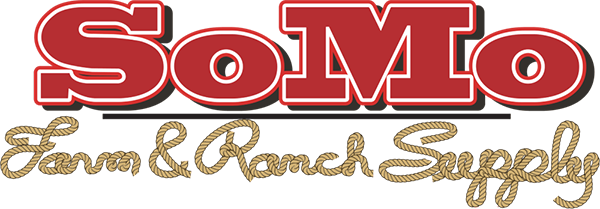Are you a new farmer or rancher gearing up for your first calving season with cattle? As you prepare for the arrival of newborn calves, you must have a solid understanding of what to expect and how to make the most of this crucial time for your herd. While it may initially seem overwhelming, you can ensure a successful calving season with helpful tips and proper preparation.
SoMo Farm & Ranch Supply covers key strategies to help you navigate your first calving season confidently and quickly.
Related Post: Five Spring Challenges Facing Cattle & Calves
Key Preparation Steps Before Calving
Preparing your cows and the calving area becomes crucial as the calving season approaches.
- Begin by checking the body condition of your cows. They should be in good health, not overweight or underweight. Sufficient nutrition for pregnant cows affects the health of the cow and the unborn calf.
- Secondly, preparing a clean, dry, and well-bedded calving area is paramount. It provides a comfortable environment for cows and reduces the risk of disease transmission to newborn calves.
- Prepare a calving kit with necessary items such as gloves, towels, disinfectant, and a calf puller for emergencies. Familiarize yourself with the local vet’s contact details and availability.
- Take time to educate yourself about the calving process and potential complications. Numerous online resources, books, and local farming groups can provide valuable insights.
Remember, preparation is the key to a successful calving season.
Recognizing Signs of Labor in Cows
Identifying signs of labor in cows is critical to timely interventions. Usually, a cow nearing labor becomes restless and isolates herself from the herd.
Look for signs of:
- Udder swelling
- Teat filling
- Relaxed pelvic ligaments
- Mucus discharge
- A recessed area around the tail head.
Monitoring these signs is critical to provide necessary assistance during calving.
Learning How to Assist in Calving
Being hands-on during calving can be essential, but knowing when and how to intervene is crucial.
- First, observe the progression of labor. A cow usually gives birth within 2 hours after the water sac appears. If the cow has been in labor for over an hour without visible progress, it’s likely time to step in.
- You should manually examine the birth canal to assess the calf’s position. It’s normal for the calf to be presented front feet first, with the head resting between the legs. If the presentation seems abnormal, seek veterinary assistance immediately.
- Work in sync with the cow’s contractions to minimize stress when pulling a calf. If the calf doesn’t breathe immediately, remove mucus from its mouth and nose and stimulate breathing by rubbing it with a towel.
However, remember, your safety and that of the animal are paramount. Avoid aggressive interventions, and do not hesitate to call a vet if the situation seems out of your expertise.
Importance of Immediate Calf Care
Once the calf is born, immediate care is essential to ensure its healthy start to life.
Begin by ensuring the calf is breathing; you may need to clear the airways by removing mucus. The calf must ingest the mother’s first milk, known as colostrum, within the first hours of life. This liquid gold contains antibodies and essential nutrients that protect the newborn from diseases. You should also dry the calf quickly to prevent hypothermia, especially in cold weather.
In addition, look out for any signs of abnormalities or illnesses in the calf, such as weakness, lack of appetite, or limping. Navel dipping with iodine solution soon after birth can prevent potential infections. Also, consider ear tagging or marking the calf for easy identification.
Early bonding between the mother and calf should be encouraged, as it promotes a strong maternal bond and healthy nursing behaviors. While managing these tasks, remember to handle the calf gently to ensure its well-being and to maintain a stress-free environment.
Proper Nutrition for Post-Calving Cows
Ensuring your cows receive adequate nutrition after calving is fundamental for their recovery and lactation performance. After calving, a cow’s energy demands increase significantly due to milk production.
A mother cow requires a high-quality, balanced diet to meet these energy requirements and maintain her body condition. Her diet should contain proteins, energy, vitamins, and minerals. Also, providing ample, clean, fresh water is vital as water intake directly impacts milk production.
Be aware of the importance of trace minerals like calcium and phosphorus, which are crucial for bone health and milk production. Offer a post-calving ration that includes good-quality forage and a well-balanced concentrate. This will help the cow regain strength and produce sufficient milk for her calf.
Monitoring your cow’s body condition post-calving can provide valuable insights into her nutritional status. If a cow is losing weight rapidly or seems lethargic, she may not be getting the nutrients she needs. In such cases, please consult a vet or a livestock nutritionist to reassess her diet.
Related Post: Revitalize Your Herd: The Benefits of Mineral Blocks for Cattle
Livestock Feed in Springfield, MO
SoMo Farm and Ranch carries feed for cattle, sheep, goats, and various other livestock. We also carry mineral blocks and cattle lick tubs for supplementation. Have more questions? Visit our store in Springfield, MO, contact us, or call (417) 865-0312. We’re happy to help in any way we can!
